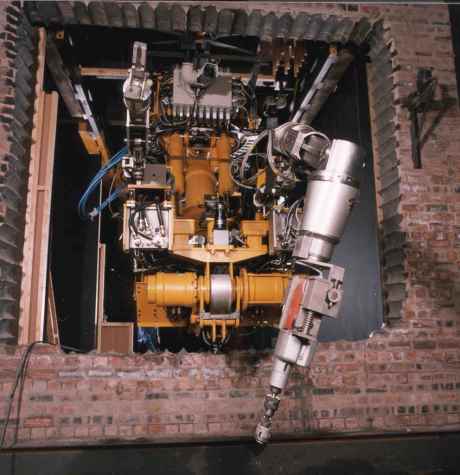Cleanup work at Sellafield remains the number one priority for the UK's Nuclear Decommissioning Authority (NDA) in its latest business plan. Its work continues with a range of completed projects and contract awards across the country.
The NDA's business plan for 2013 to 2016 sets out the priorities for the organisation across all of its 19 sites, including Sellafield; the UK's low-level waste repository (LLWR) in north-west England; Dounreay in northern Scotland; the UK's Magnox power plants, including the still-operating Wylfa unit 1; and former fuel cycle and nuclear research facilities. NDA chief executive John Clarke said that Sellafield is the organisation's number one priority, where the focus will remain on a program of major projects to decommission high-hazard legacy ponds and silos. Meanwhile, work continues towards the completion by the end of the decade of contracts at the site's Magnox and Thorp reprocessing plants.
Elsewhere in the UK, key NDA activities over the next year include the continued defueling of the Oldbury and Sizewell A reactors, continued operation of Wylfa 1, and an accelerated decommissioning and demolition program at the Bradwell and Trawsfynydd sites, due to be placed in care and maintenance in 2015 and 2016 respectively. A new owner is also to be selected for the contract to operate the 12 sites in the NDA's Magnox and Research Site Restoration Ltd fleets.
Sellafield plant decommissioning complete
One legacy plant can now be ticked off the NDA's Sellafield decommissioning list: the Caesium Extraction Plant (CEP), built in the 1950s to produce radiation sources for medical uses, has now been decommissioned. The plant, which operated from 1950 to 1958, presented numerous decommissioning challenges. Not least amongst these was its position above tank cells used to store the highly active effluents which provided its operating feedstock, plus the presence of significant qualities of radioactive materials and high radiation levels. This meant that the project had to be completed remotely, using a specially built stand-alone decommissioning module.
 |
| Suitable for uprooting plants: The CEP project was the first at Sellafield to be completed entirely by remote methods using equipment as shown here (Image: Sellafield Ltd) |
The ten-year decommissioning project saw the retrieval of 16 tonnes of radioactive waste from a facility which "was never designed with decommissioning in mind," Sellafield Ltd head of decommissioning Steve Slater explained. Lessons learned from each phase of the project were incorporated to develop tooling and techniques to manage the waste items encountered, and the project's perfect safety record will provide a benchmark for future remote decommissioning at Sellafield.
Five more years for waste consortium
UK Nuclear Waste Management (UKNWM) has been awarded a further five year contract to manage LLW Repository Ltd (LLWR), the company that manages and operates the UK's national low-level waste repository and implements the nation's low-level waste strategy on behalf of the NDA.
The international consortium won the initial contract in 2008 in the first NDA competition to secure parent body organisations to manage site licence companies. During its first five-year term, the contract has realised savings of £30 million ($46 million) in savings, extended the life of the LLWR facility, reduced volumes of waste bound for the repository by a factor of three, and seen the opening a new vault at the repository, according to the NDA.
Hertel wins Calder Hall contract
Construction and maintenance services company Hertel has won a major contract for the deplanting of Calder Hall, the UK's first commercial nuclear power station which closed in 2003 after 47 years of operation. The contract covers the removal of the top ducts, high- and low-pressure drums, external pipe works and all structural steelwork from the heat exchangers from the plant at the Sellafield site. Work is due to start in April 2013 and will take three and a half years. Hertel will build on its previous experiences with dismantling heat exchangers at the plant to fulfil the contract, which will complete the removal of all 16 of Calder Hall's heat exchangers.
Researched and written
by World Nuclear News




_18570.jpg)
_18938.jpg)
_33584.jpg)
_82983.jpg)





